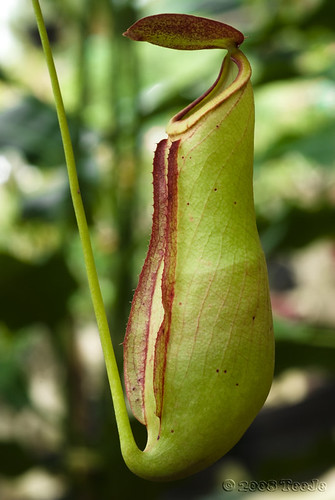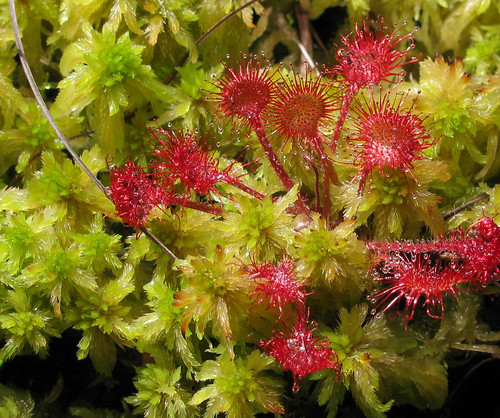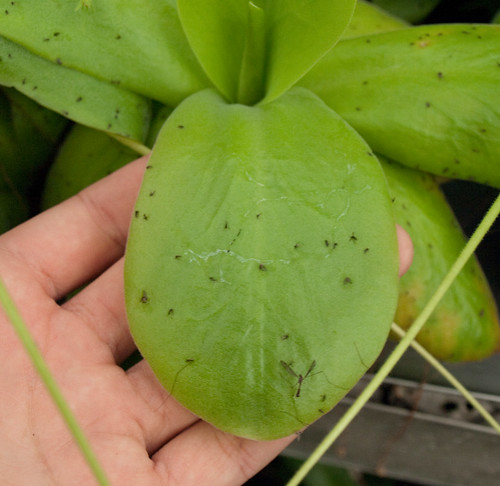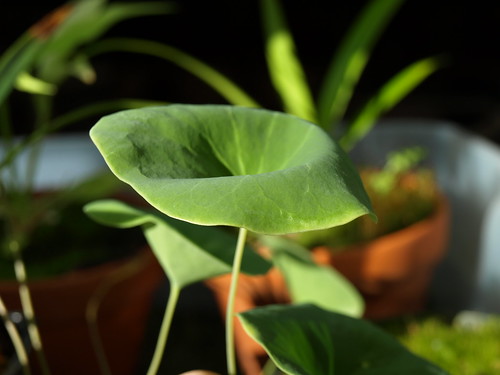
Pitchers Nepenthes shown in the photo above are carnivorous plants that catches prey and digests them in modified leaves. Their natural habitats are bogs and fens. Enthusiasts have to accept odours of such environment.The video clip below shows a poisonous pitcher plant capturing insects.
The traps work by:
- Pitfall Traps - folded leaves holding digestive enzyme.
- Flypaper - leaves covered in sticky stalks
- Snap Traps - hinges shut when triggered.
- Suction Traps - hinged, shaped like a bladder.
- Lobster Pot - twisted tubes with hair and glands.
Examples
Pitfall Traps

Nepenthes maxima from Huntington Botanical Gardens.
Flypaper

Sundews (Drosera rotundifolia) by Sandy Richard

Gnats stuck on butterworts
Suction Traps

Bladderwort or Utricularia nelumbifolia by Don Coyote.
Snap Traps

The first pitcher plant that I learned about was the Venus fly trap. (Photo by Simon Whitaker).
Source:
- Botanical Society of America: Carnivorous or Insectivorous Plants

No comments:
Post a Comment